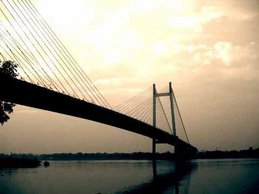Despite the myriad problems that India is facing in the current times it is as un-deniable fact that India is well on its way to consolidate it’s position in the world map as a powerful country. The super powers are sitting up and taking notice of the power of India.
Shashi Tharoor, Under Secretary General of United Nations has been writing a lot about two interlinked concepts of Brand India and Soft Power in the Times of India since the beginning of January 2007. Tharoor has acknowledged the strides that India is making in making its presence felt across the globe and has underlined the fact that India needs to consolidate its position and promote Brand India only through the use of Soft Power.
The term Brand India is self explanatory. The term Soft Power needs to be defined a little more for this article to be understood. Wikipedia lists the following definition of Soft Power:
“Soft power is a term used in international relations theory to describe the ability of a political body, such as a state, to indirectly influence the behavior or interests of other political bodies through cultural or ideological means. The term was first coined by Harvard University professor Joseph Nye. Soft power has since entered popular political discourse as a way of distinguishing the subtle effects of culture, values and ideas on others' behavior from more direct coercive measures, such as military action (hard power) or economic incentives. The resources from which soft power behavior is derived are culture (when it is attractive to others), values (when there is no hypocrisy in their application) and foreign policies (when they are seen as legitimate in the eyes of others). Unless these conditions are present, culture and ideas do not necessarily produce the attraction that is essential for soft power behavior. Popular culture and media is regularly identified as a source of soft power, as is the spread of a national language, or a particular set of normative structures; a nation with a large amount of soft power and the good will that engenders it inspire others to acculturate, avoiding the need for expensive hard power expenditures.”
Tharoor has given quite a few accolades to the Indian media for promoting the image of India as it is today. It is an acceptable fact that media plays an important role in shaping the psyche of not only the citizens of India but also that of the rest of the world. The term media encompasses not only the print media but also the small as well as the big screen, the internet etc.
As a very ordinary Indian citizen I am compelled to ask the kind of message that the media is passing to the world citizens. Does it show the true picture of Indians? In an article titled ‘Making the most of India’s Soft Power’ which was penned by Shashi Tharoor for the Sunday Times on January 28, 2007 there is a huge surprise in store. Kyunki Saas bhi Kabhie Bahu Thi has been lauded by him as one of the daily soaps which has grabbed the attention of many around the world. Two of the major resources of soft power are culture and values. So, does it mean that we are merrily conveying the fact that it is normal for Indians to get married 3-4 times in their lifetime; it is normal for Indians to deal with in-numerable look alike; it is normal for Indians to battle death for in-consequential reasons; it is normal for Indian married girls to wear only sarees; …… Are Tulsi and Parvati a true representation of mothers of India today? I guess the world thinks that all the above set of ‘culture and values’ are normal to Indians as Shashi Tharoor ends that particular article by saying ‘Tulsi Zindabad’. That is the kind of image that Balaji Telefilms has given about Indians to the world.
The print media does not lag too behind in promoting Brand India. For a newspaper that has launched the ‘India Poised’ campaign it is quite sad to note that the front page of the Sunday Newspaper dated January 28, 2007 is occupied by huge colored photographs of cine stars – one of whom is poised to marry the son of a film legend and another who is poised to win the controversial Big Brother show in UK. I guess that is what it means by saying ‘India Poised’. The good work done by Monojit Dutta in bringing the street kids back to school gets a mention only in the second page since I guess his contribution in shaping the lives of young Indians does not fit into the scheme of India Poised campaign. That is why probably media sites like BBC and NDTV are like a cool breeze.
Apart from this what the world perhaps would find attractive about India are probably high literacy rates, abolish of poverty, decrease in corruption in the politico-judicial systems etc etc. Once developed these will weild a considerable amount of soft power over the world citizens.
Irrespective of what the media is projecting and looking at the waves of change that are being generated by the Urban Indians I would like to say ‘Indians Zindabad’. Lets all toil together and be justified in saying ‘Mera Bharat Mahaan’.
Subscribe to:
Post Comments (Atom)



1 comment:
I think your passion and questions are laudable and I personally like the buzz that comes with all this euphoria.
However, if our infrastructure and resources can cope with the economic growth is to be seen. Economist Joseph stiglitz argues that the political growth in the world hasn't caught up with the economic growth. What this means for fair trade and the divide between rich and the poor is again for time to tell.
Meanwhile Mera Bharat Mahaan.
Post a Comment